| Umělec magazine 1997/6-7 >> Interview with Milena Slavická | List of all editions. | ||||||||||||
|
|||||||||||||
Interview with Milena SlavickáUmělec magazine 1997/6-701.06.1997 Jeroným Janíček ml. | q&a | en cs |
|||||||||||||
|
Why has Výtvarné umění magazine gone out of business?
The magazine ceased to exist out of prosaic reasons: there was no money to publish it. We’ve heard that at the time when the magazine went definitely under, there was still money alocated for it at the Ministry of Culture. No, Výtvarné umění didn’t apply for any grants at all this year. It was obvious last year already that it would be impossible to keep the magazine afloat. The Ministry’s funding kept on shrinking every year while printing costs were rising. In addition, I did not receive any funding from the ČFU Foundation and I could not expect to receive it this year. The same situation was true for other sources as well. When I analyzed the magazine’s financial situation, there was no way out and for this reason I did not apply for any grants. Is there a magazine on Czech market which could make up for Výtvarné umění as to its content and scope? Výtvarné umění has been since its inception conceived as a specialized professional magazine. As such, it has to distribute information within its own specialized field - in art community - but it is not a magazine which would be aimed at wider public readership. The aim of the magazine is also to keep continuity of certain profession in terms of passing over experience from generation to generation, keep up professionalism of publishing which is not a standard in the Czech Republic, professionalism of critique, methodology of work, etc. This is also the reason why I chose the title Výtvarné umění in 1991. As you may know, a magazine of the same name was prohibited in the 70‘s. It was our goal to restore continuity of the magazine. Another goal was to place Czech art into context of contemporary Euro-American art world after the twenty year break which I considered vitally important. Today, I know that nobody was really interested in it. The magazine had about 60% of information on Czech art and 40% of materials were on contemporary international art. Information on contemporary international discourse was selected very carefully which means that it was not an accidental choice of material that ends up on the editorial desk. We really strived to present the most significant trends in arts and the most influential personalities. We also published contemporary philosophical texts which concerned art in some way - Baudrillard, Derrida... This proved to be ilusory which I still cannot understand today. Neither artists nor critics enjoyrf reading them. As to Czech art, we wrote strictly about contemporary trends and filled some gaps in Czech history. We published a series of monographic articles on artists who started working in the 60‘s - Boštík, Šimotová, Věra Janoušková, Olga Karlíková, Vladimír Janoušek as well as Reinek, Váchal and Drtikol. We wanted the exchange of information in contemporary art context to be bilateral. The magazine had extensive English summary and we wanted to distribute it abroad which we failed doing. Some institutions, however, subscribed to it - Centre Pompidou, MOMA... I don’t see it accidental that a magazine conceived in this way ceased to exist. It didn’t find support because many other activities vanished - the Soros University in Prague, Ivona Raimanová’s exhibition program at the Prague Castle. I think this represents danger but at the same time I think nobody is really interested. Wasn’t it a pity to give up Výtvarné umění despite the lack of state funding? I applied for grants with all the foundations I know about, both local and foreign. I was getting just enough money to maybe cover the cost of paper. The organization which I expect should cover at least 10 to 15% of the total costs - the ČFU Foundation - unfortunately showed no interest in the magazine recently. I do admit that I was not able to find sources of funding other than the state and art community. I admit my fault but at the same time I doubt that it would be possible with this type of a magazine. What do you want to do now? I don’t really know what I’m going to live off. I’m in a situation when I think of leaving arts completely and start doing something completely different. My dream is to publish books but, again, I can’t get the money for it. I’m preparing two exhibitions this year - Czech part at the international biennale in Montenegro and an exhibition under a working title Painting which should be in Rudolfinum’s small gallery. What makes a person like you who devoted large part of her life to arts give up everything and leave arts? I can’t pay the bills. My income as Výtvarné umění’s editor-in-chief was puny but meant a certain minimum for me which I now don’t have. In a situation when Výtvarné umění ceased to exist and other magazines face various problems, do you see any way out of this obvious crisis? I can say how I see it but I’m not sure whether it’s a way out. The Ministry of Culture should decide whether they want to do cultural policy or not. Right now it seems that they actually don’t want to do any cultural policy. I’m not sure whether that is right in a state of a crisis in arts. If the Ministry decides that they do want to do cultural policy, they have to set priorities and say what is necessary to keep up by all means even under circumstances of lack of funding. Communication in arts, cultural information for public are such value, I believe. Maybe it’s not really number one - art museums are probably that number one but information follows at the second position: publishing a professional art magazine and good books on art even in minimal circulation. Keeping about three non-commercial galleries with well structured program is similarly important. This represents the bare minimum for Prague art community for example. The Ministry is an office and it is necessary to push officers to actually make some decisions. But art community lacks power to do so, everybody is taking care of their own business. I know it’s hard but if there isn’t such initiative and doesn’t turn itself into political force, there is no chance of improvement. Otherwise, the Ministry itself would have to decide without being forced.( page 5)
01.06.1997
Recommended articles
|
|||||||||||||
|
04.02.2020 10:17
Letošní 50. ročník Art Basel přilákal celkem 93 000 návštěvníků a sběratelů z 80 zemí světa. 290 prémiových galerií představilo umělecká díla od počátku 20. století až po současnost. Hlavní sektor přehlídky, tradičně v prvním patře výstavního prostoru, představil 232 předních galerií z celého světa nabízející umění nejvyšší kvality. Veletrh ukázal vzestupný trend prodeje prostřednictvím galerií jak soukromým sbírkám, tak i institucím. Kromě hlavního veletrhu stály za návštěvu i ty přidružené: Volta, Liste a Photo Basel, k tomu doprovodné programy a výstavy v místních institucích, které kvalitou daleko přesahují hranice města tj. Kunsthalle Basel, Kunstmuseum, Tinguely muzeum nebo Fondation Beyeler.
|






















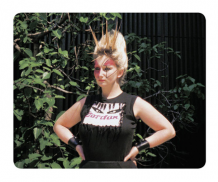




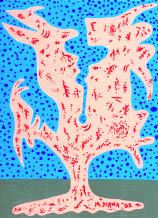
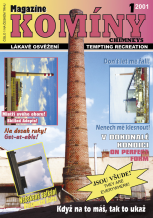
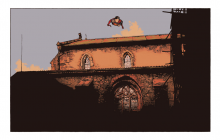
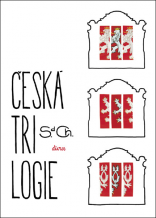


 We Are Rising National Gallery For You! Go to Kyjov by Krásná Lípa no.37.
We Are Rising National Gallery For You! Go to Kyjov by Krásná Lípa no.37.
Comments
There are currently no comments.Add new comment